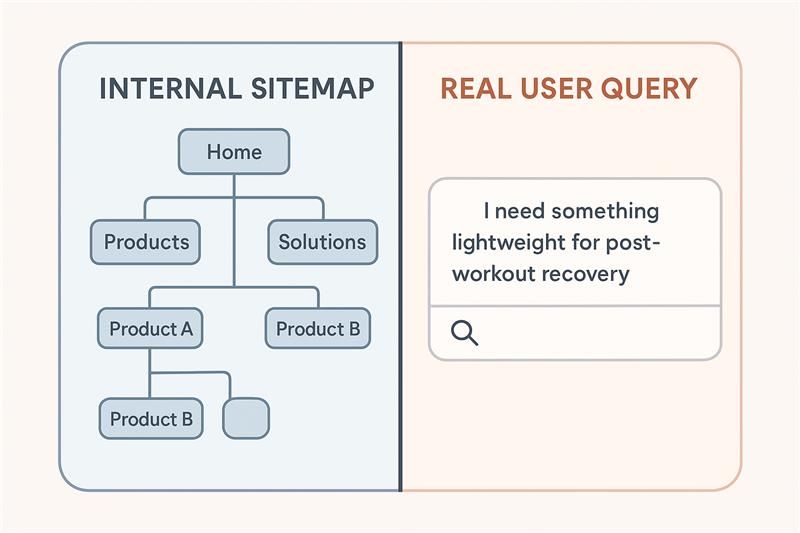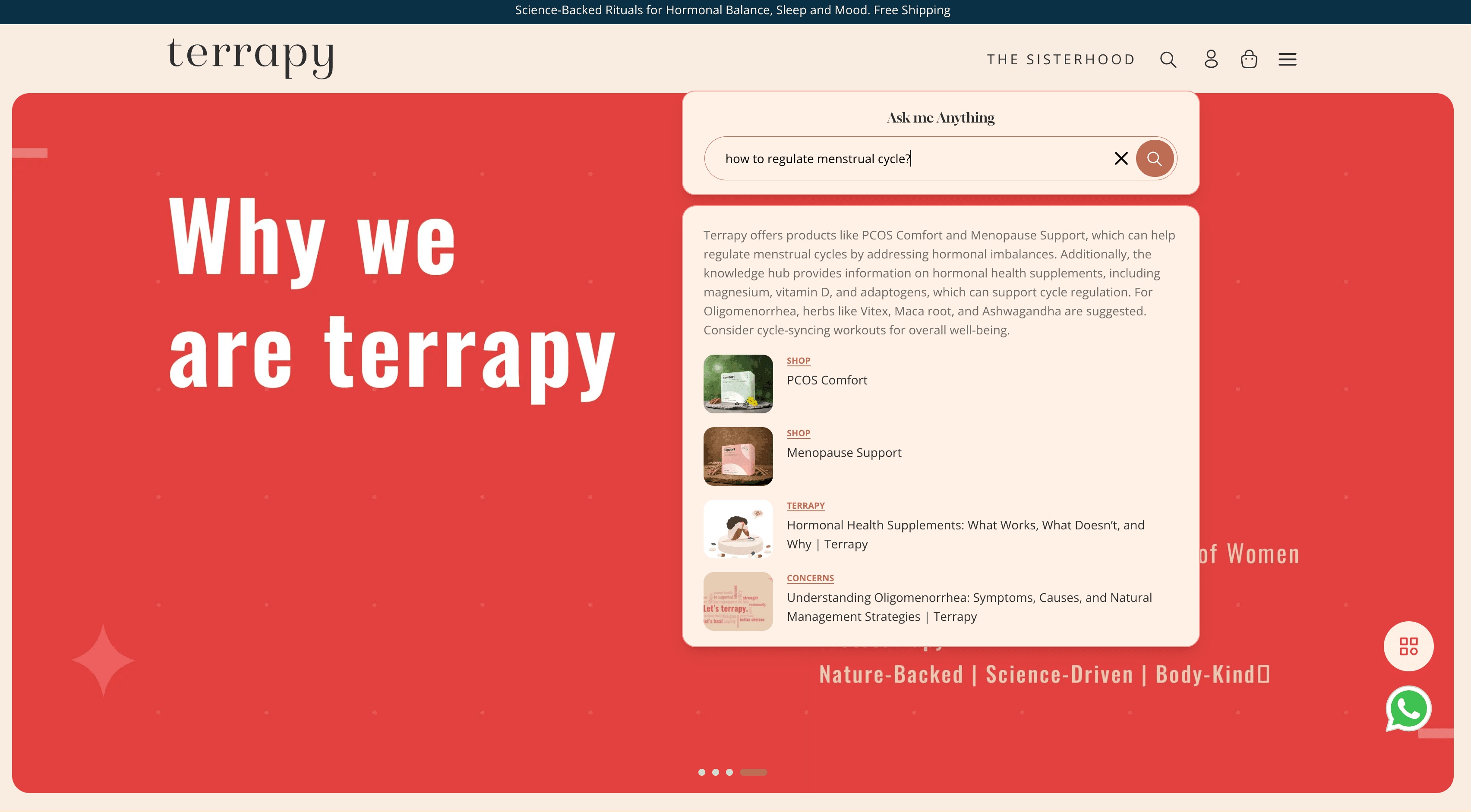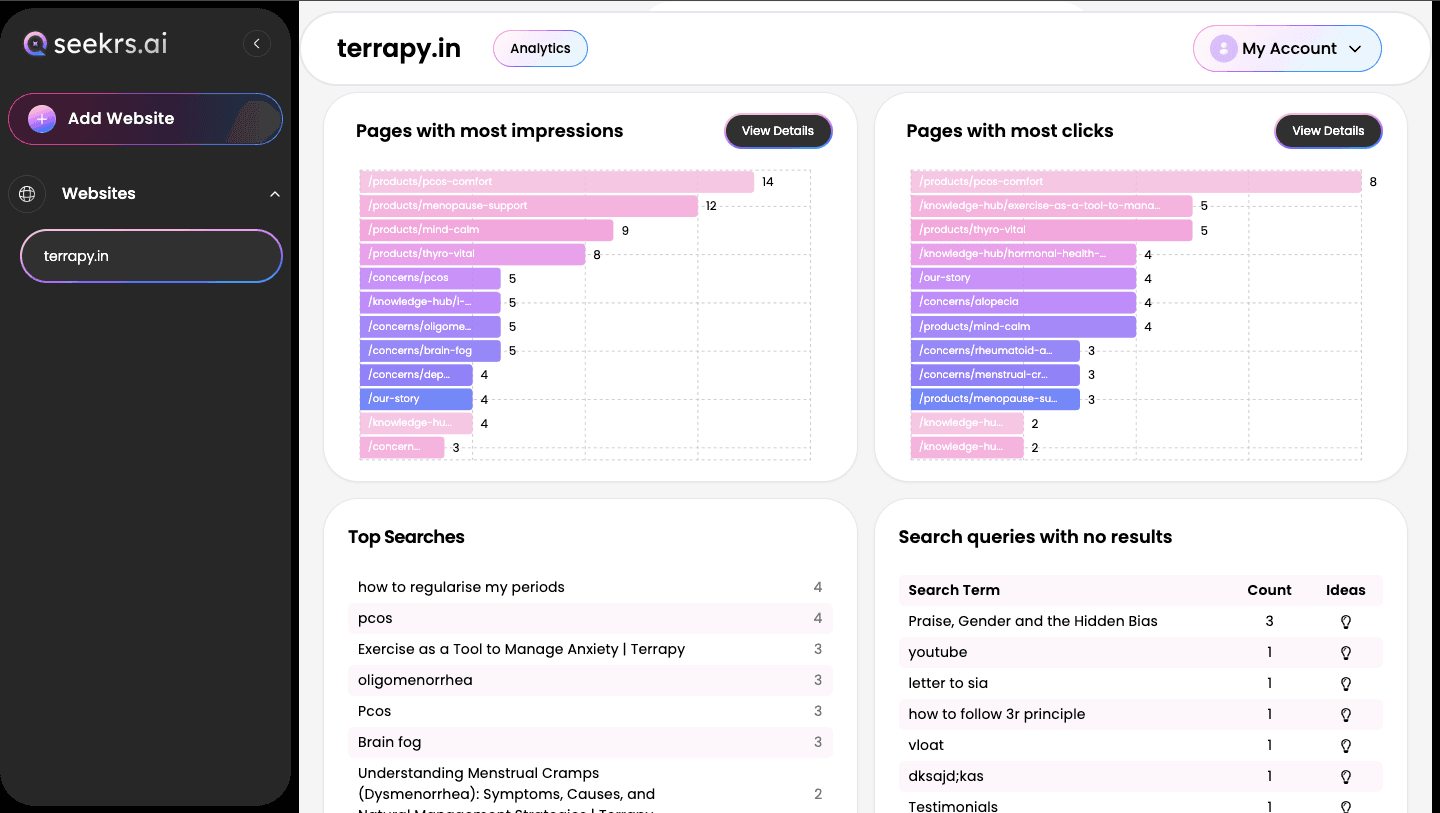This isn’t a UX crime.
It’s a signal.
In my consulting work across D2C, SaaS, and content-first brands, one trend is becoming impossible to ignore: navigation is no longer how most users find things.
They search — and increasingly, they search like they speak.
Unless your system understands that language, the best-designed site in the world won’t help.
The Navigation Fallacy
When teams build navigation, they do it from an inside-out perspective:
- “How do we organize our products?”
- “What’s the logical category tree?”
- “Which pages should get top-level priority?”
But users operate with an outside-in mindset:
- “I want something lightweight for post-workout recovery.”
- “Is this covered by insurance?”
- “How is this different from the older model?”
That disconnect is where the friction begins.

In one project I reviewed recently, a wellness brand had beautifully structured menus — dropdowns for every therapy type, filterable tags, sub-pages grouped by city.
Yet 70% of users were skipping the menu entirely and using search.
And worse — they weren’t getting useful results.
What AI Search Understands (That Menus Can’t)
Site navigation works well when users already know:
- What they’re looking for
- What category it falls under
- How your site is structured
That’s rarely the case.
AI-powered search, on the other hand, does something navigation can’t: it interprets ambiguity.
A user can type:
“Sleep issues after pregnancy”
…and the system can surface:
- Blog posts about postpartum insomnia
- A specialist who deals with maternal sleep disorders
- A relevant service plan or chat support
With keyword-based search or dropdown menus, that’s nearly impossible unless you’ve explicitly labeled everything just right.

What We Saw at Terrapy: Search as First-Click UX
When we implemented semantic search for Terrapy, a D2C wellness platform, we didn’t overhaul their site.
We simply made search front-and-center — not buried in a header, but visible and prominent on high-intent pages.
We also tracked not just what users clicked, but what they typed.
This gave us two major insights:
-
Users weren’t using site language.
They weren’t searching “CBT programs in Bangalore.”
They were typing “therapist for overthinking near me.” -
Queries revealed intent patterns the navigation never accounted for — like:
“therapy + insurance” or “evening slots only.”
These weren’t just better matches — they became inputs for product and content roadmap.

So Should You Kill the Menu?
No — but you should rethink its role.
Navigation provides structure.
Search provides discovery.
They solve different problems:
- Navigation is helpful for known paths.
- Search is essential for exploratory or intent-driven journeys.
What you need to ask is:
Where in your funnel does the user stop navigating and start asking?
That’s where AI search belongs — not as a fallback, but as the primary interface.
